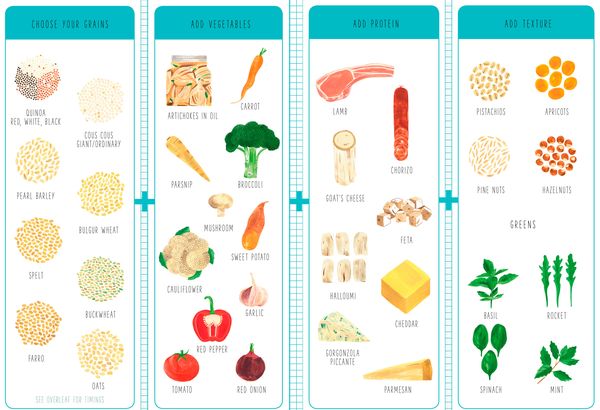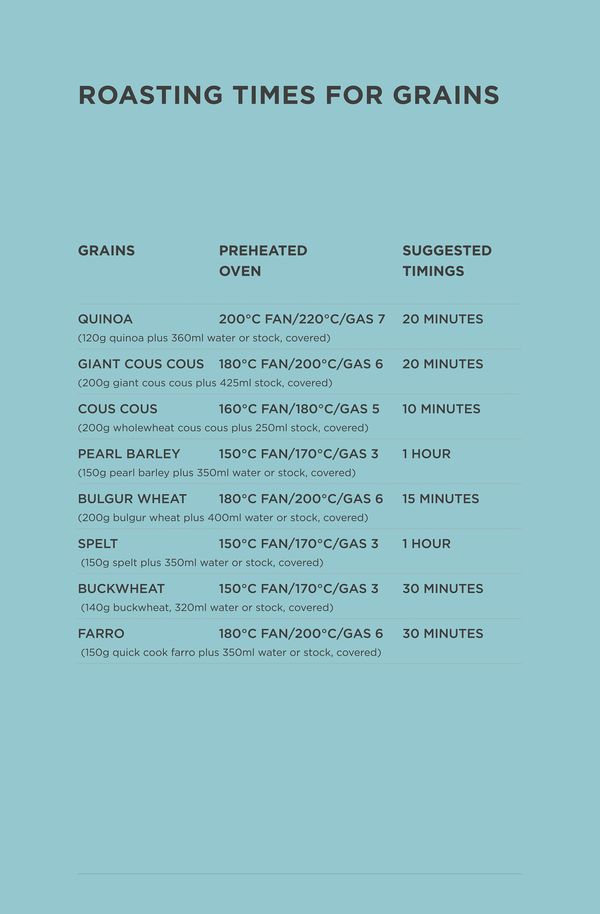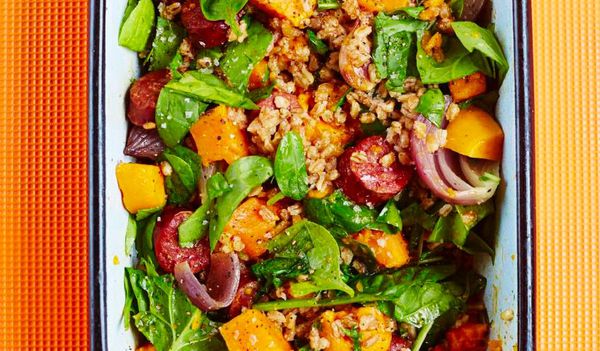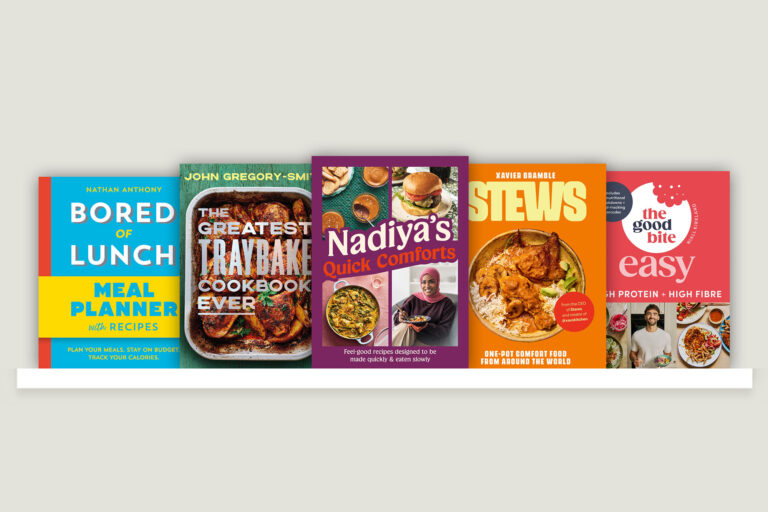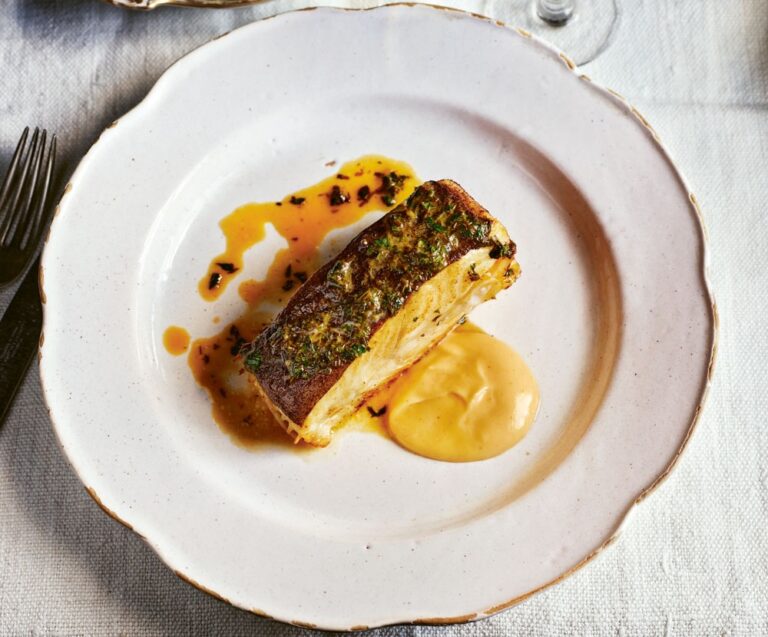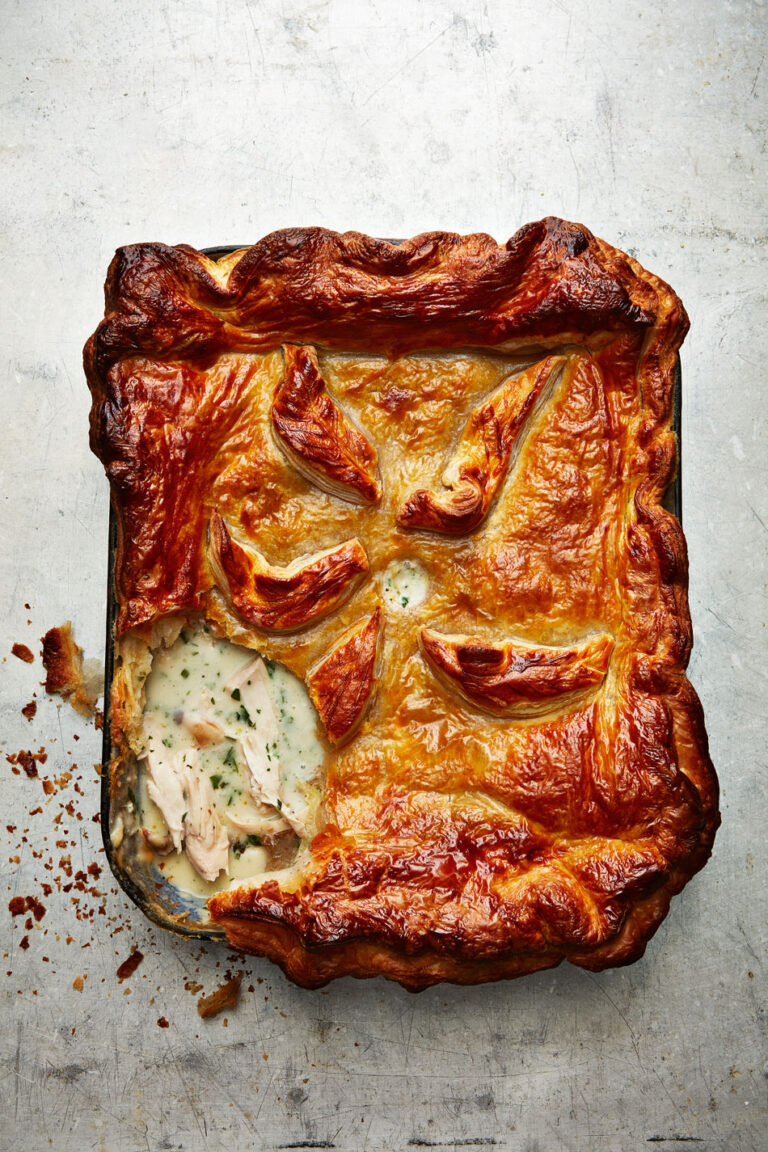One pot to rule them all: my ultimate build-a-tin for a balanced, nutritious and most importantly delicious meal from limited storecupboard ingredients
My mother – with her Narnia-like kitchen larder – is brilliant at pulling together a storecupboard dinner. One of our favourite childhood comfort dishes was kichri – a simple dish of rice and lentils cooked together with potatoes, topped with crispy fried onions, and perhaps an egg. It’s often made during the monsoon season, when the streets are too flooded to get out to the shops for fresh vegetables – no Indian housewife would be without potatoes, onions, lentils and rice, and versions of the same dish are made throughout the Middle East and North Africa. You might recognise it as the basis for kedgeree, and as the simplicity of cooking an entire meal in one tray or pot has always appealed to me, it seems an excellent template for a balanced dinner, no matter what your staple storecupboard ingredients are.
From the book
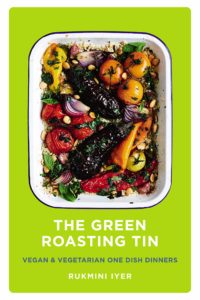
The Green Roasting Tin
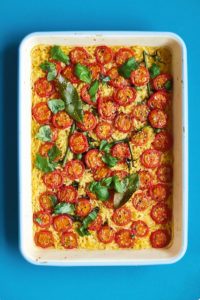
Fast one-dish family favourites
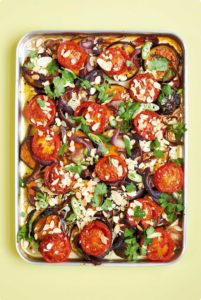
All-in-one creative vegan recipes
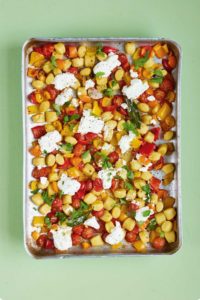
Easy one-tin vegetarian dinners
For the perfect storecupboard one-pot dish, the elements I’d take out of kitchri to apply across the board would be this:
1. Take a carb, be it rice, pasta, bulgur wheat, pearl barley or spelt.
2. Add a protein to it – lentils, beans, chickpeas, and pop them into a large lidded casserole dish or roasting tin with enough stock to cook them in (see chart below), along with vegetables and flavourings of your choice. Potatoes and sweet potatoes count as a vegetable in my book (double carbs!) but if you’ve got frozen peas, half a squash, the end of a broccoli, cauliflower, leeks, carrots, cabbage etc, then any of these could be added in.
3. Then you want to think about your flavourings. Kitchri is very lightly spiced, from just a bay leaf and ground cumin fried with onions, to the more special version with cloves, black cardamom, cinnamon, ground turmeric, fresh ginger and ground coriander. If you’re using bulgur wheat as your base carb, perhaps you’d want to add some ras-el hanout or harissa paste, with pearl barley a few generous tablespoons of pesto, or change up the rice with coconut milk, peanut butter and a pierced red chilli. To add layers of flavour and use up odds and ends from the fridge or cupboard, think about adding sundried tomatoes or jarred artichokes for Mediterranean inspired dishes, and roasted jarred red peppers, olives or preserved lemons for Middle Eastern style one-pots. (And perhaps reduce the amount of salt accordingly.) If you’re not vegetarian, now’s the time to add in that last bit of chorizo or a few bacon lardons from the fridge, or the heel of parmesan you’ve been meaning to chuck into a tomato sauce.
4. For me, the all-important touch is how you finish the dish at the end. From something as simple as a squeeze of lemon, a tablespoon of butter (or ghee – hello) to a lime and chilli dressing, chopped herbs with olive oil and a bit of crushed garlic or yogurt, think about adding some acidity and a fresh element to serve. And most of all – add some texture! Crispy fried onions and a lacy fried egg work well with kitchri, a handful of chopped peanuts would finish off a South East Asian inspired dish, while toasted pine nuts or flaked almonds would be wonderful with Mediterranean or Middle Eastern style dishes.
Have a look at the infographic below for inspiration on how to build your own complete one-pot storecupboard dinner with grains – once you’ve got your template down, there’s no limit to the number of variations you can make.
